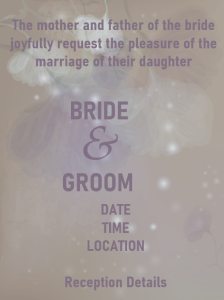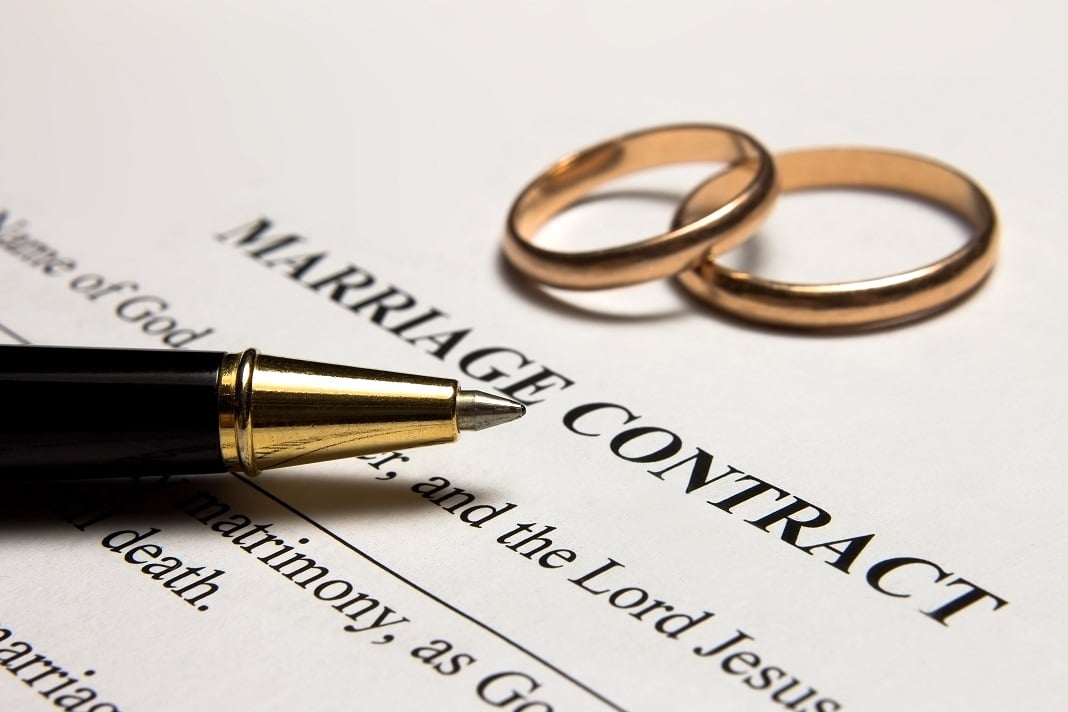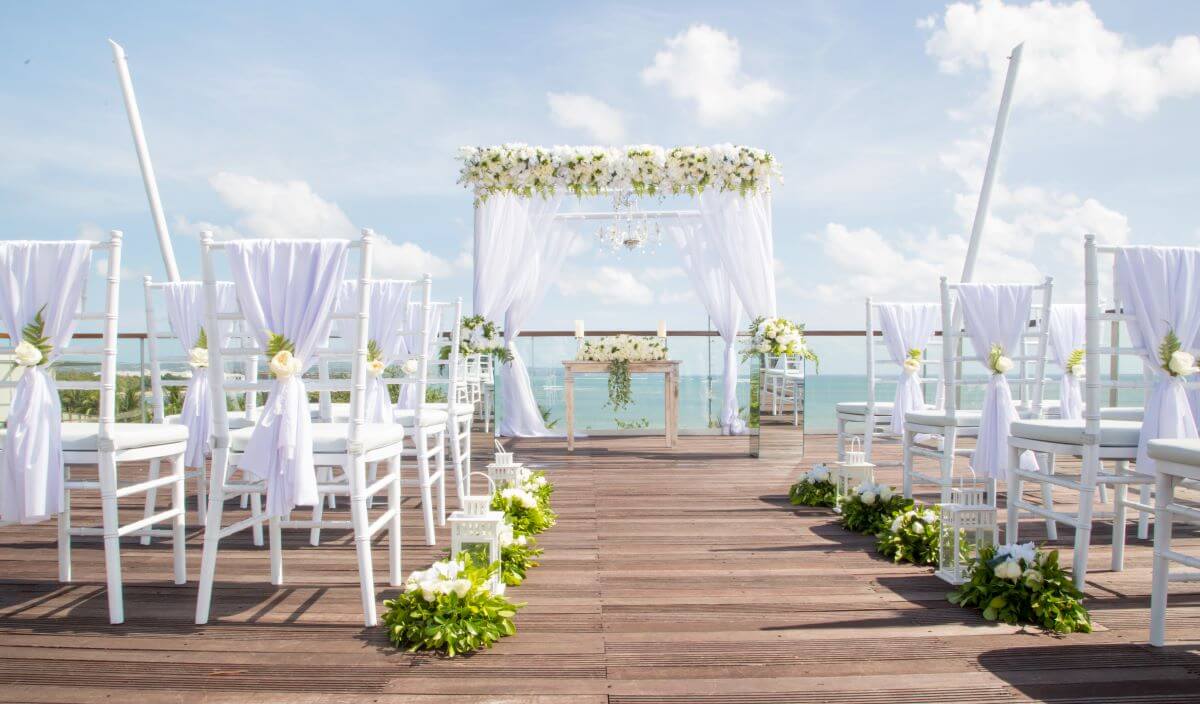For many brides and grooms to be, the first complex job is understanding all wedding invitation wording requirements and traditions. After the save the dates have gone out and the venue booked, the job then falls on not just who to invite to the wedding, but how.
A wedding invite is a formal letter asking the recipient in third party language to attend their upcoming wedding. It is usually sent out 4-8 weeks before the wedding, to give guests ample time to book overnight accommodation if required.
It tells your guests where and when the ceremony and reception are and lets everyone know who is hosting (i.e., paying for) the wedding. Traditionally, the host was the bride‘s family, but these days the groom’s family may help out or the couple may pay for the wedding themselves or a combination.
This matters because of how you word your wedding invitation. You want to acknowledge the host, you want to include your loved ones and, most of all, you don’t want to offend anyone. Below are some general guidelines to ensure that your first step toward your new life goes as smoothly as possible.
A few general rules on wedding invitation wording:
- All invitations include certain basic elements and can be arranged to best suit your wedding:
- The host line
- The request line
- The bride and groom
- The date and time
- location line
- The reception information
- RSVP details.
- Formal invitations use British spelling (“honour”) with the time, date and year spelt out, i.e., “five o’clock in the evening,” not “5:00 p.m.,” and “two thousand twenty one,” not “2021”.

- Each piece of information has its own line and commas are omitted, except between the location of the wedding and the city and state in which it will take place.
- Ceremonies held in a church or synagogue should use “request the honour of your presence.” Those held in a hotel, home or club use the less formal “pleasure of your company.” Casual weddings at a beach or restaurant can reflect more of the bride and groom’s personalities by inviting guests to “participate in festivity of the occasion.”
- Including names is part of what a wedding invitation is all about, but it’s who appears and in what order they appear that can cause a headache. Below you’ll find a variety of ways to address invitations with various family situations.
- Always triple check that the final version is grammaticality and informationally correct.
Bride and Groom Line
- Traditionally, a bride uses no title before her name; the groom may use “Mr.” if desired. You can include a title like “Dr.” if applicable for the bride, groom or both.
- You can omit titles altogether. This is also appropriate if both sets of parents are serving as hosts.
Host Line
- Traditionally, this is the bride’s parents hosting and inviting the guests.
- If the groom’s parents are contributing, both sets of parents can be listed as hosts, with the bride’s listed first.
- If the bride’s parents are hosting, you typically leave out the bride’s last name. If the groom’s parents are involved, the bride’s last name should be included.
- If a couple is paying for their own wedding, they often want to include their families. If that’s your situation, consider listing your own names first and adding “together with their families.” This is especially good if there are several sets of parents and stepparents, as it will give you a less cluttered invitation.
- While etiquette says that only the family hosting the event is listed, it’s a nice gesture to mention the groom’s parents, even if they’re not throwing the wedding.
- Divorced parents appear on separate lines with the mother’s name first.
- When either or both of the bride’s parents have remarried, list only the natural (birth or adoptive) parents since they’re usually giving the bride away. However, depending on your family’s situation, you might want to revise the wording; say, if your stepmother is the person who raised you, you would want to include her.
- A sensible way to keep the peace is to invite the guests yourselves and mention both families, though this might not be suitable for a very formal wedding.
Date and Time Lines
- Spelling out the day, date and year is appropriate for a formal wedding. However classic “half after six o’clock” maybe, it’s too formal for a beach ceremony or a small destination wedding.
- Use only the hour when stating the time: There’s no need to use a.m. or p.m. Write “in the morning” or “in the evening” if the time of day may be unclear, or if you simply prefer it.
Location Line
- Make sure you have the full name of your church (e.g., “Saint Luke’s Episcopal Church” rather than “St. Luke’s,” and spell out “Saint”). The only abbreviation used in wedding invitations is RSVP.
- Include street addresses for city landmarks and well-known locations only if you’re inviting a lot of out-of-town guests who might need directions. Otherwise, just use the name (e.g., “The Plaza Hotel”).
- Again, invitations have almost no punctuation and use line breaks to replace commas. Exceptions are made to separate city and state in the location line or to prevent confusion.

Reception Cards
- Include the ceremony site at the bottom of the invitation if the reception and ceremony are at different locations. If they share a site, there’s no need to repeat the location.
- It’s mandatory to enclose a separate reception card if only some of your guests are invited to the reception.
- If the reception doesn’t immediately follow the ceremony, be sure to mention the time.
RSVP Cards
- For the most formal invitations, “RSVP” indicates that guests should send a personal reply.
- Years ago there was no RSVP. You wrote a note to the hosts. That tradition still stands for the most formal of weddings. For everyone else, enclose a response card with a self-addressed stamped envelope, and include a date by which a reply is requested. Anything that helps you get a headcount to your caterer sooner rather than later is welcome.
- Postcard response cards are entirely appropriate for informal weddings.
Optional Details
- Strict etiquette tells you not to include information about attire on your invitation. Your guests may be able to tell from the tone of your invitation, but generally, they appreciate knowing what’s expected of them.
- You can specify white tie, black tie, black-tie optional, semiformal, cocktail attire, dressy casual, or informal.
Things to consider
Divorced and Remarried Parents
Many people today come from families where parents are divorced and remarried, and it’s difficult to please everyone with the order of your wedding invitation wording.
The most sensible thing to do is to list your natural parents’ names only, and on separate lines. If one step-parent has played a significant role in either the bride or groom’s life it’s appropriate to list that person’s name on the same line as her husband or his wife.
Always list the mother’s name first (unless only the father is hosting the event). It’s a sign of respect and should keep everyone happy.
If you’ve got several sets of remarried parents, each couple gets their own line. Or you can use the very convenient “together with their parents” to save your invitation from getting too busy.
Deceased Parent or Parents
If the hosting parent is widowed, start with the surviving parent’s name or the surviving parent’s new married name and his or her spouse’s name. Be sure to specify who is related to the bride.
USING TITLES
Generally, titles are omitted from wedding invitation wording except for “Dr.” when either or both the bride or groom or their parents are doctors. If you choose to include a title do not use it in conjunction with Mr., Mrs., or Ms.
- Lawyer: “Esq.” appears after the surname signifying a lawyer.
- Judge: “The Honourable” precedes a judge’s name.
- Clergy: “The Reverend” (Christian), “Rabbi” (Jewish) precedes the name.
- Military: The appropriate rank precedes the name: “Captain,” “Major,” etc.
ELOPED COUPLES
Some couples decide that they want something other than the traditional wedding and reception and elope, but still want to share their joy with friends and family. Many couples who elope or decide to tie the knot at a Registrar’s office celebrate their newly married bliss with a reception, generally hosted and paid for by the couple themselves.
Follow the etiquette for a couple hosting their own wedding and include only reception information. Select the tone, formal or informal, that best suits you.



